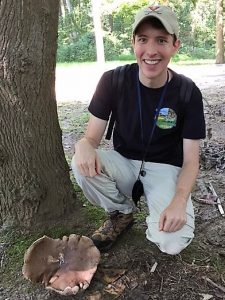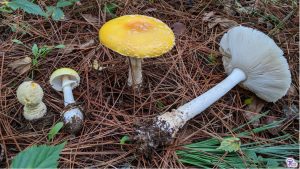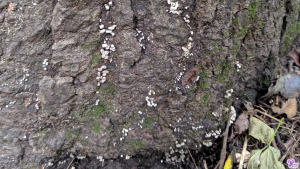About Thomas Roehl
 I graduated from the University of Virginia in 2013 with a B.S. in Biology. During my time in college, I randomly decided to take a class on the biology of fungi and I was immediately hooked. Since then, I have tried to learn all I can about the organisms in this enigmatic kingdom. Currently, I live in the Washington, D.C. area and am involved with the Mycological Association of Washington, Inc.
I graduated from the University of Virginia in 2013 with a B.S. in Biology. During my time in college, I randomly decided to take a class on the biology of fungi and I was immediately hooked. Since then, I have tried to learn all I can about the organisms in this enigmatic kingdom. Currently, I live in the Washington, D.C. area and am involved with the Mycological Association of Washington, Inc.
Note: This site and its contents are neither affiliated with nor endorsed by the Mycological Association of Washington, Inc. I mentioned the club only to demonstrate my connection to the mycophile community, which is important for readers evaluating my trustworthiness.
Why Another Mushroom Blog?
If you go looking for them, there are quite a few mushroom blogs out there. What makes Fungus Fact Friday different from all of these? Most fungus-related blogs discuss mushrooms, and ONLY mushrooms. Here at Fungus Fact Friday, I examine a wider variety of mycological topics, from mushrooms to fungal ecology to fungal cell biology and beyond.
Unlike most other bloggers, I also include a list of sources at the end of each post. This way, the reader knows exactly where I got my information and therefore can use it in their own research. With all the misinformation on the internet, these sources are perhaps the most valuable part of Fungus Fact Friday. The only way to know whether or not you can trust me is to evaluate the sources I use. You shouldn’t just take my word on a subject; only trust me once you’ve evaluated my sources and found them trustworthy.
How to Use This Site
- Fungus Fact Friday is not a field guide. Although I describe mushrooms in many posts, these descriptions alone cannot be used to identify mushrooms. Only a field guide written for your country will allow you to accurately identify mushrooms. Fungus Fact Friday may be used alongside a field guide to give more information about a specific mushroom, but the site is not intended to be used to identify any mushroom. Anyone interested in eating wild mushrooms should join their local mushroom club before foraging on their own. Mushroom clubs are the best resource available for region-specific knowledge of edible and poisonous mushrooms. Find your local club on this list from the North American Mycological Association.
- Hover Explanations: Certain words or phrases in posts are written in bold green text. When you click on or hover over one of these words, a box will appear above it with more information about that word’s meaning. Moving common definitions out of the main post streamlines the post for mycophiles while remaining friendly to first-time readers. Any term with a hover explanation can be found in the glossary.
- Citations: In the normal view, citations appear as simple links at the bottom of each post under the heading, “See Further.” For a more advanced view, click the “Show Full Citations” button. This will switch the post to a format with full citations listed at the end of the page. I began using the Chicago style, but found Nature’s formatting more suited to an online format. To switch back to the basic view, click the “Hide Full Citations” button. This system makes my blog readable and ensures the information is easy to verify. All information I present in a post can be found in the sources listed at the end of that post, unless I specifically use personal pronouns (examples: “I have heard…” or “In my experience…”).
Work in Progress
Fungus Fact Friday began its transition from Facebook to fungusfactfriday.com on September 7, 2016. As a result, earlier blog posts may not have all the features described above. I am in the process of updating the 156 old posts so that they are optimized for this new format.
Contact Thomas Roehl
[contact-form to=’thomas.roehl@fungusfactfriday.com’][contact-field label=’Name’ type=’name’ required=’1’/][contact-field label=’Email’ type=’email’ required=’1’/][contact-field label=’Subject’ type=’text’/][contact-field label=’Comment’ type=’textarea’ required=’1’/][/contact-form]






![#011: Characteristics of Kingdom Fungi [Archived]](https://www.fungusfactfriday.com/wp-content/themes/hueman/assets/front/img/thumb-small-empty.png)


